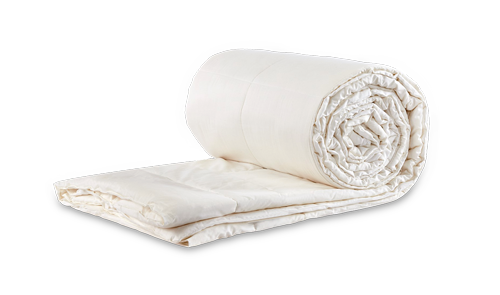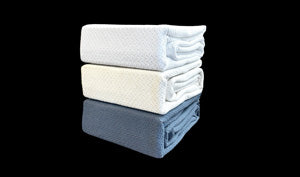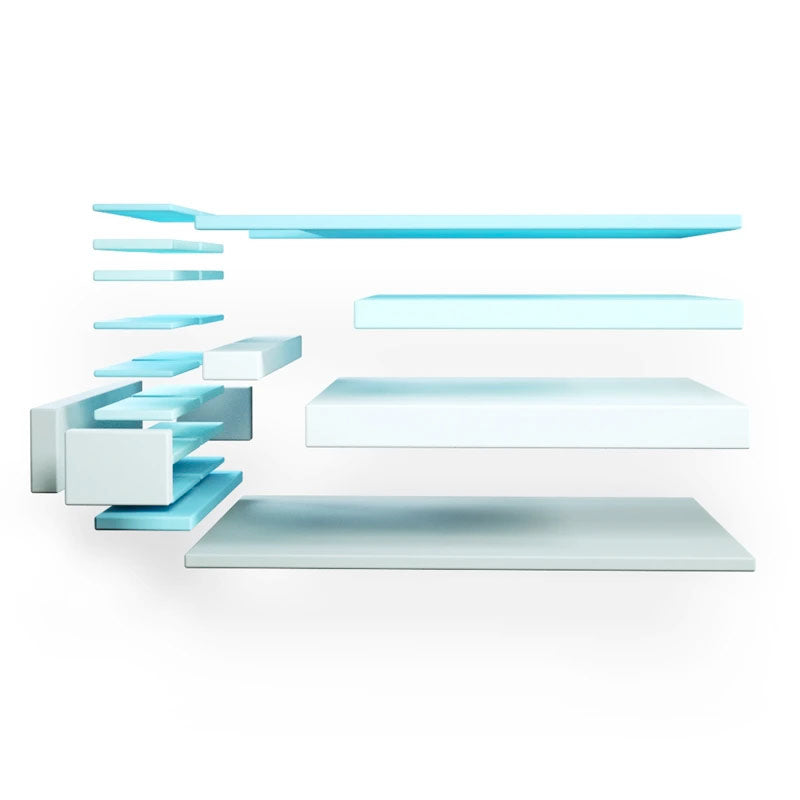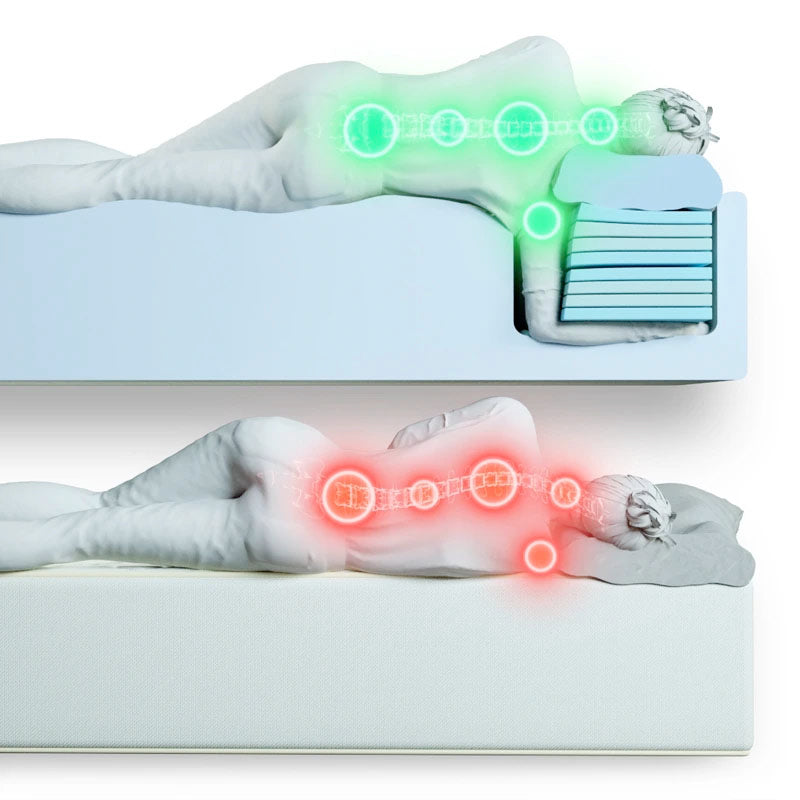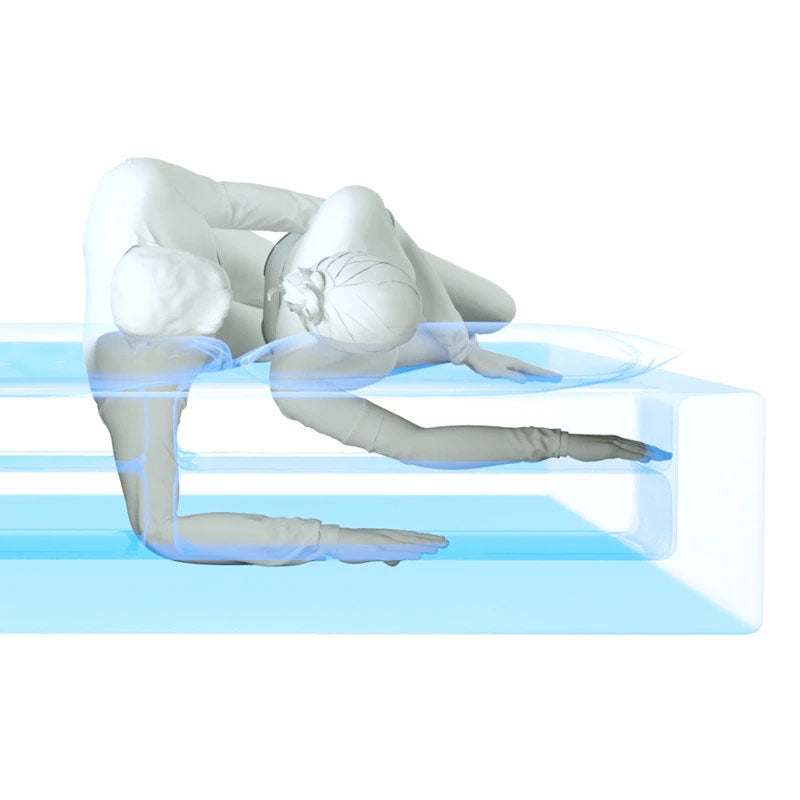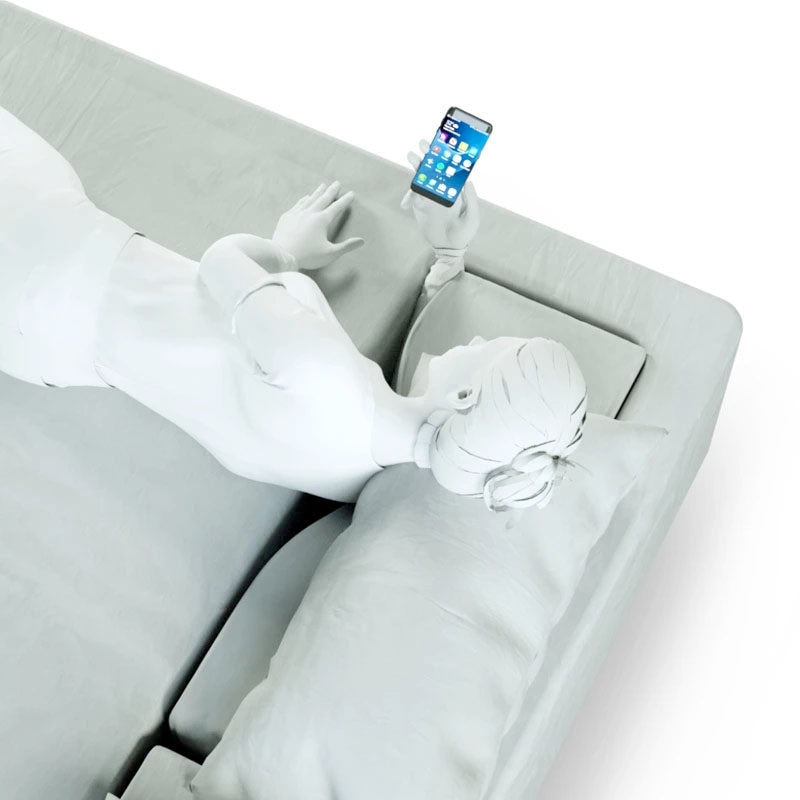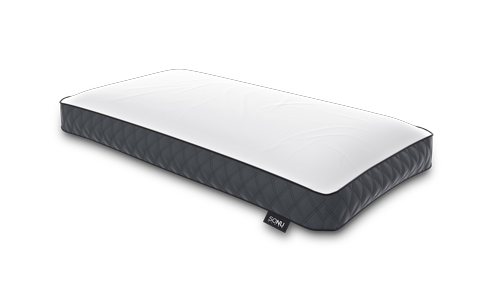You’ve finally decided that it’s time to replace your mattress. That’s great!
Maybe you’ve narrowed your search down to two types of mattresses: innerspring and foam. Now, the real investigation begins.
Which one do you choose? What’s the difference? What factors should you consider to make your decision? That’s where we come in. Hang tight, and we’ll tell you everything you need to know about innerspring and foam mattresses, as well as why SONU’s mattress is taking the industry by storm.
What Is an Innerspring Mattress?
The innerspring mattress is probably the most well-known. It has been around since the 1870s and is a predecessor for today’s modern mattresses.
The most important part of a mattress is its support core. As the name implies, the innerspring mattress is filled with springs — metal coils. The coils create a strong base covered by a soft comfort layer, which provides cushioning that acts as a buffer between the sleeper and the support core. The comfort layer is usually made of foam, quilting, or other material.
There are multiple types of coils that can go into an innerspring mattress. Let’s review them.
Pocket Coils
Pocket coils, also known as Marshall coils, were invented by James Marshall. The coils are unattached and are placed in individual fabric pockets. They are known for limiting motion transfer because the coils respond individually to pressure. One sleeper will not be disturbed when another person gets out of bed or moves around.
The pockets are all stitched together to help keep them in place and better conform to the contours of a person’s body while lying on the bed. Being stitched together also ensures that the body receives even support from the mattress, relieving pressure points for body parts like the shoulders, hips, or knees.
Bonnell Coils
Bonnell coils were the first coils made for mattresses. In the 1800s, Louis Andrew Vargha patented the coils fashioned from buggy seat springs. The springs are known for their hourglass shape, and they are tied together with helical wires.
Bonnell coils are notably inexpensive to make, meaning mattresses made with them tend to be cheaper. Their inexpensive manufacturing also doesn’t hold up in the long run, so some mattress makers began using heavy-gauge tempered wire to extend their life a little bit. Unfortunately, this only helps temporarily; the mattress is still less durable when compared to other innerspring mattresses.
The hourglass bonnell coils are very flexible, but this flexibility often leads to sagging and uneven support under sleepers’ bodies. There is also a high rate of motion transfer due to this flexibility.
A bonnell coil innerspring mattress is okay if you’re in a pinch and plan to replace it after a few years. Otherwise, skip it and select a different innerspring mattress.
Offset Coils
Offset coils, or Karr coils, are an improved version of the bonnell. They were invented by Frank Karr.
Unlike the round, hourglass bonnell coils, offset coils are square. They are tied together with short helical wires, creating flexibility that results in less motion transfer. Offset coils alternate; when one turns to the left, the next one turns the right, and so on.
The coils' wide, less pronounced middle part makes the support core stronger. Mattresses with this type of coil system are durable and high quality, making them more expensive.
Continuous Coils
A continuous coil makes up an entire row of coils from a single coil wire. These coils run from top to bottom, and they help reduce motion transfer. Many popular brands of mattresses use continuous coils because these innersprings have proven to be incredibly durable.
What Are the Benefits of Innerspring Mattresses?
Innerspring mattresses have withstood the test of time. They’re affordable, and they allow people to enjoy a good night’s sleep. These mattresses also tend to sleep cooler than other mattresses due to the airflow between the coils.
Depending on the coils used, innerspring mattresses can provide good motion support. The mattresses offer strong support and pressure relief that is comfortable for heavier people, back sleepers, or stomach sleepers.
The higher the number of coils, the more supportive the mattress. Also, you can choose how much support you need from an innerspring based on the coil gauges or thickness. A higher coil gauge allows more bounce and makes a mattress softer. A lower gauge equals a firmer mattress.
What Are the Cons of Innerspring Mattresses?
Innerspring mattresses aren’t for everyone. Although 65 percent of shoppers are happy with their innerspring mattresses, many regret that choice.
People with pain conditions are less satisfied with innerspring mattresses than any other. Only 59% are satisfied with their purchase.
Innerspring mattresses tend to break down and sag as time goes on. They don’t last as long as some other types of mattresses. These mattresses are also not recommended for side sleepers because they may apply too much pressure.
What Is a Foam Mattress?
Foam mattresses, like the SONU Sleep System, are all the rage today. When you think of foam mattresses, you might envision one giant piece of foam inside an encasing. The truth is foam mattresses consist of multiple layers.
Foam beds conform to the body to provide support and pressure relief. They’re known for the lack of motion transfer sleepers experience with them.
You’ve likely heard of memory foam, but did you know there were other types of foam mattresses on the market? The SONU Sleep System incorporates several types of foam, including high resilience foam and serene foam, for optimal comfort.
Serene Foam
Serene foam delivers a sleep experience like no other. A relatively new kid on the block, serene foam contains microscopic air capsules that increase airflow, delivering you a unique, cool sleeping experience.
Many serene foam mattresses, like the ones offered at SONU, contain layers of memory foam encapsulated in Serene foam. These premium, highly resilient materials can help you get the best sleep of your life. The SONU Sleep System features a plush top layer of serene foam to directly support your body.
Memory Foam
Memory foam, or viscoelastic foam, is probably the most well-known foam on the market. It is the most commonly used. The foam's ability to conform to and retain the body's shape makes it one of the best options for pressure relief.
There are different types of memory foam and a wide range of prices.
Standard memory foam is most commonly used to make these types of mattresses. It’s also the most affordable. There isn’t much airflow with standard memory foam, which results in warmer sleep.
Open-cell memory foam has openings in the small cells of foam that allow better airflow. As a result, it’s much cooler to sleep on.
Gel memory foam is memory foam with an open-cell design and gel beads embedded. The combination of the gel and open cells helps cool the mattress down.
Polyfoam
Polyfoam is made of polyurethane. It is frequently used as an ingredient in today’s foam beds. Polyfoam mattresses are popular because they have more bounce than memory foam. Many memory foam mattresses include a layer of polyfoam as either the comfort layer or part of the support core.
Latex Foam
To create a latex foam mattress, a thin latex layer is attached to the memory foam. The most common types of latex used are dunlop and talalay. Dunlop is the most common latex used, and talalay is a softer, more flexible latex.
What Are the Benefits of Foam Mattresses?
Foam mattresses provide excellent pressure relief. If you sleep with a partner, there will be a limited motion transfer with a foam mattress. And foam mattresses can last for a long time due to the premium materials they’re made from.
What Are the Cons of Foam Mattresses?
Most foam mattresses aren’t for people who want to sleep cool. Not all foam mattresses are made with open cells, limiting the amount of air that can flow in and out of the mattress.
Foam mattresses can be expensive. Someone on a budget who needs a mattress right away might want to skip it and buy something less expensive.
How Do Innerspring and Foam Mattresses Compare?
Now that you know everything about innerspring and foam mattresses, let’s see how the two rivals measure up.
| Innerspring | Foam | |
| Average cost | $600+ | $800+ |
| Average lifespan | 5.5-6.5 years | 6-7 years |
| Support core | Metal coils | Foam |
| Pressure relief | Low to moderate | Moderate to high |
| Motion transfer control | Limited | High |
| Temperature/Airflow | Cooling
Better airflow |
Warming
Less airflow with standard memory foam |
| Noise level | Noisy, medium to loud squeaking | Quiet |
| Best for | People over 230 lb
Stomach sleepers Back sleepers Cool sleepers |
Hot sleepers
Couples All sleeping positions |
There are advantages and disadvantages to both types of mattresses.
Innerspring beds use a variety of metal coils to provide support for the body. They can be rather flat, with very little body contouring. Pressure relief is low to moderate; innerspring mattresses are firm and have thinner comfort layers than other mattresses. However, this can be a good thing for someone with back issues because they may need a firm surface to sleep on.
When it comes to temperature, innerspring mattresses will usually sleep cooler than other mattresses due to the metal coils' cooling effect. Although the average price for an innerspring mattress is $600, you can find one for much less than that, so it is budget-friendly.
That said, the average lifespan of an innerspring mattress is up to 6.5 years. The types of coils used determines how durable the mattresses are.
Sleeping on a foam mattress can feel like you are sinking into it. Some people enjoy this aspect, and others do not. The foam conforms close to the body, taking its shape.
Even though foam mattresses allow you to sink into them, dense foam mattresses are available. The SONU Sleep System offers sink-in support that levels your spine when you are side sleeping, provides balanced comfort, and allows for full range of motion.
Foam’s ability to retain the body's shape helps it deliver stellar pressure relief. However, conforming to the body this way can trap heat against the body. That’s why the SONU Sleep System includes a two-inch cooling layer across the top of the mattress.
The lifespan of foam mattresses depends on their density, and they are more expensive than their competitors. However, foam is a high-quality material that lasts longer than innerspring mattresses.
If foam is the best material for your body, that initial payment would be a smart investment. SONU offers a 100-day trial, so you can ensure your new mattress gives you the sleep you deserve before you commit.
Conclusion
The quality of the mattress you sleep on can truly change your life. There’s a product available to suit all of your needs, whether you need to sleep cool or need firm support for body aches and pains. If you prefer innerspring mattresses, there is no shortage of them on the market for you to choose from. Likewise, there are a plethora of foam mattresses for you to choose from.
If you’re a side or stomach sleeper who wishes you could immerse your arms into your mattress when you sleep, you’re certainly in luck. SONU’s sink-in support system can help.
The SONU Sleep System consists of four Support Pillows, a patented Comfort Channel, and a mattress made of innovative serene foam that molds to your unique body shape.
SONU’s mission is to provide customers with a sleep experience that is unforgettable - a level truly above the rest. The next time you go mattress shopping, think of one name that’s synonymous with tailormade comfort for you: SONU.
Sources
What Are the Differences Between Innerspring and Memory Foam Mattresses? | Sleep Foundation
Spring Air Mattress Reviews, Mattress Ratings, Best Mattress | Beds Blog
The 9 Best Rated Innersprings Mattresses | Sleep Advisor
Think Twice Before Buying Another Innerspring Mattress | Consumer Reports
Types of Mattresses | Sleep.org
Foam vs. Spring Mattresses – Which is Better? | Sleep Foundation
Memory Foam vs. Serene Foam: What's the Difference? | Best Mattress Brand













